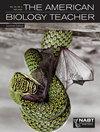Review: The Unified Learning Model: How Motivational, Cognitive, and Neurobiological Sciences Inform Best Teaching Practices
IF 0.3
4区 教育学
Q4 BIOLOGY
引用次数: 0
Abstract
The Unified Learning Model: How Motivational, Cognitive, and Neurobiological Sciences Inform Best Teaching Practices . By Duane F. Shell, David W. Brooks, Guy Trainin, Kathleen M. Wilson, Douglas F. Kauffman and Lynne M. Herr . 2009. Springer (ISBN 9789048132140). 211 pp. Hardcover. $139.00. This is an excellent book about how learners learn and behave in a classroom and how this understanding about learning could be put to use by teachers for effective teaching. The authors present the Unified Learning Model (ULM), which is based on three basic principles of learning, namely working memory allocation, prior knowledge, and motivation. The book is divided into two parts. In the first, the basic principles of ULM that cause learning are described in detail, and in the second part application of the model to develop effective teaching and learning strategies is discussed. There are several learning theories and models in contemporary education literature that have created conflicts and confusion in the minds of teachers and education researchers because these theories use different vocabulary and explain only certain aspects of learning phenomena. The ULM is an attempt to connect different learning theories and encompass almost all the aspects of learning. The authors explain with clarity the three basic principles of learning and their connection to form the ULM. The first chapter is a brief introduction to the ULM. In chapter 2, "Learning," the authors do an excellent job of explaining …综述:统一学习模式:动机科学、认知科学和神经生物学如何指导最佳教学实践
统一学习模式:动机科学、认知科学和神经生物学如何指导最佳教学实践。作者:杜安·f·谢尔、大卫·w·布鲁克斯、盖伊·特雷恩、凯瑟琳·m·威尔逊、道格拉斯·f·考夫曼和琳恩·m·赫尔。2009. Springer (ISBN 9789048132140)。211页,精装版。139.00美元。这是一本关于学习者如何在课堂上学习和行为的优秀书籍,以及教师如何将这种对学习的理解用于有效的教学。本文提出了统一学习模型(ULM),该模型基于工作记忆分配、先验知识和动机三个基本学习原则。这本书分为两部分。在第一部分中,详细描述了导致学习的ULM的基本原理,在第二部分中,讨论了该模型在制定有效的教学策略中的应用。当代教育文献中的一些学习理论和模型在教师和教育研究者的心中造成了冲突和困惑,因为这些理论使用不同的词汇,只解释了学习现象的某些方面。统一学习理论试图将不同的学习理论联系起来,涵盖学习的几乎所有方面。作者清楚地解释了学习的三个基本原则,以及它们之间的联系,形成了终极学习模型。第一章是对ULM的简要介绍。在第2章“学习”中,作者出色地解释了……
本文章由计算机程序翻译,如有差异,请以英文原文为准。
求助全文
约1分钟内获得全文
求助全文
来源期刊

American Biology Teacher
BIOLOGY-EDUCATION, SCIENTIFIC DISCIPLINES
CiteScore
0.80
自引率
20.00%
发文量
108
期刊介绍:
The American Biology Teacher is an award winning and peer-refereed professional journal for K-16 biology teachers. Articles include topics such as modern biology content, biology teaching strategies for both the classroom and laboratory, field activities, and a wide range of assistance for application and professional development. Each issue features reviews of books, classroom technology products, and "Biology Today." Published 9 times a year, the journal also covers the social and ethical implications of biology and ways to incorporate such concerns into instructional programs.
 求助内容:
求助内容: 应助结果提醒方式:
应助结果提醒方式:


